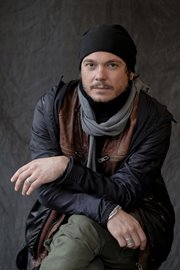For L’Espresso
26 November, 2019
Green laser beams reflect off a police armored vehicle in Santiago, Chile. Protesters used lasers to dazzle security forces during anti-government demonstrations.
In the most extensive civil unrest in Chile’s recent history, people rose throughout the year in protest against economic inequality. Despite being one of the region’s most prosperous nations, Chile is the most unequal country in the OECD group of nations, according to a United Nations report. Just 1% of its population controls 33% of its wealth. The trigger for the unrest was an increase in subway fares instigated by President Sebastián Piñera on 18 October. A peaceful rally in the capital Santiago sparked further protests leading to a nationwide uprising. Demands grew to include comprehensive economic reform and the replacement of the constitution, which was drawn up during the reign of Augusto Pinochet in the 1980s and which created a legal basis for a market-driven economy and privatized pensions, health and education. Demonstrations grew in size—the largest comprising more than one million people on 25 October—and became increasingly violent. According to Human Rights Watch, the authorities used excessive force against demonstrators, including pellet shotguns that caused numerous eye injuries, and were accused of abuse, including rape, of people in detention. Women played a prominent role in the demonstrations, particularly after reports of human-rights and sexual offences against female protesters by security forces. On 15 November President Piñera announced a referendum on a new constitution to be held in 2020, but unrest continued with demands for an inquiry into human rights violations during the protests and an immediate overhaul of the pension, health and education systems.

Fabio Bucciarelli
Fabio Bucciarelli is an Italian photographer and writer known for his documentation of conflicts and the humanitarian consequences of war. Bucciarelli feels the urgency to tell s...